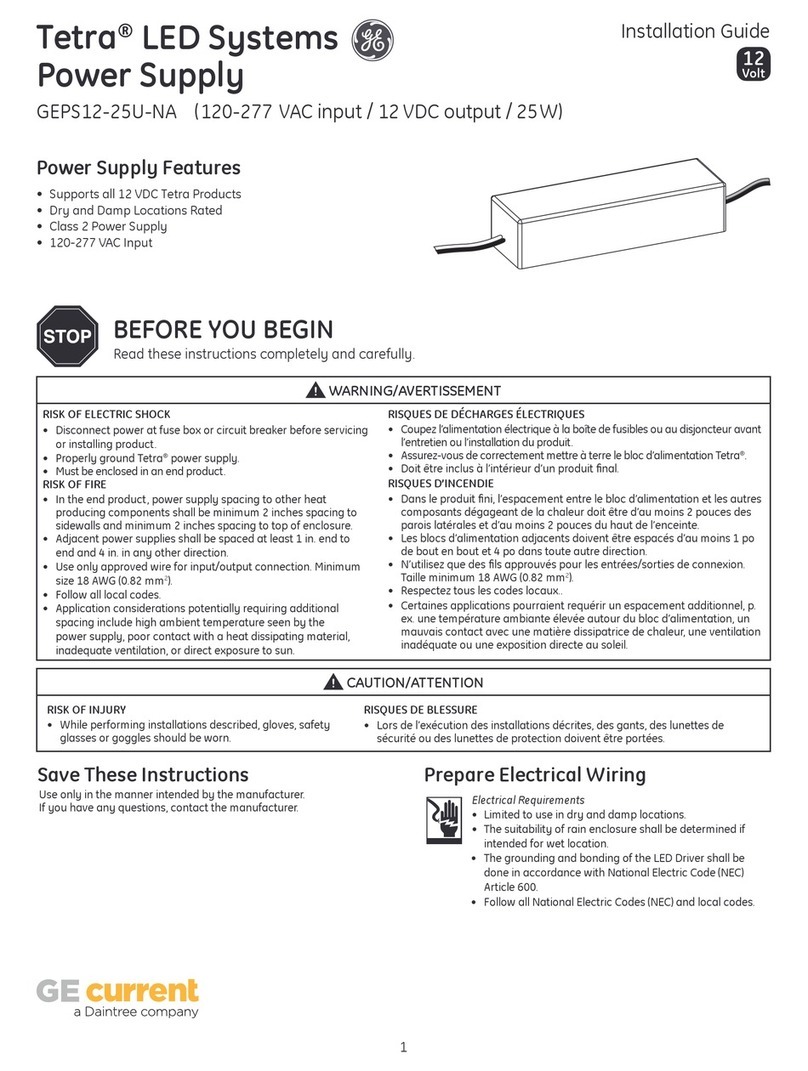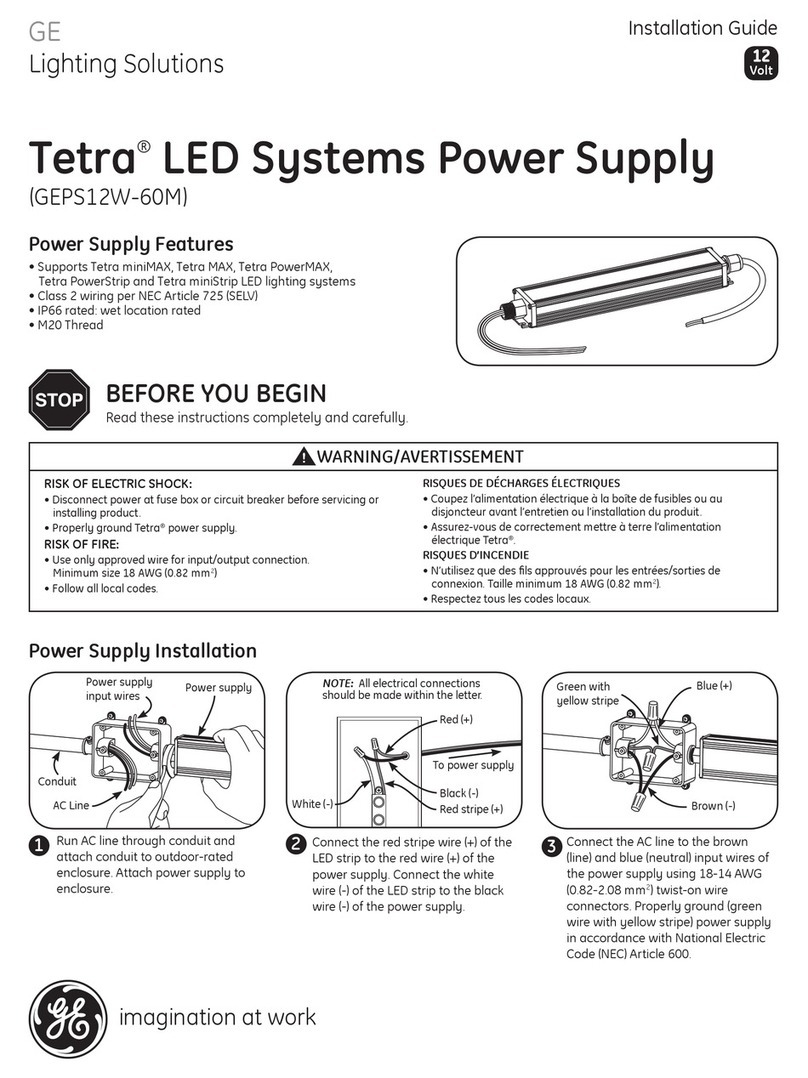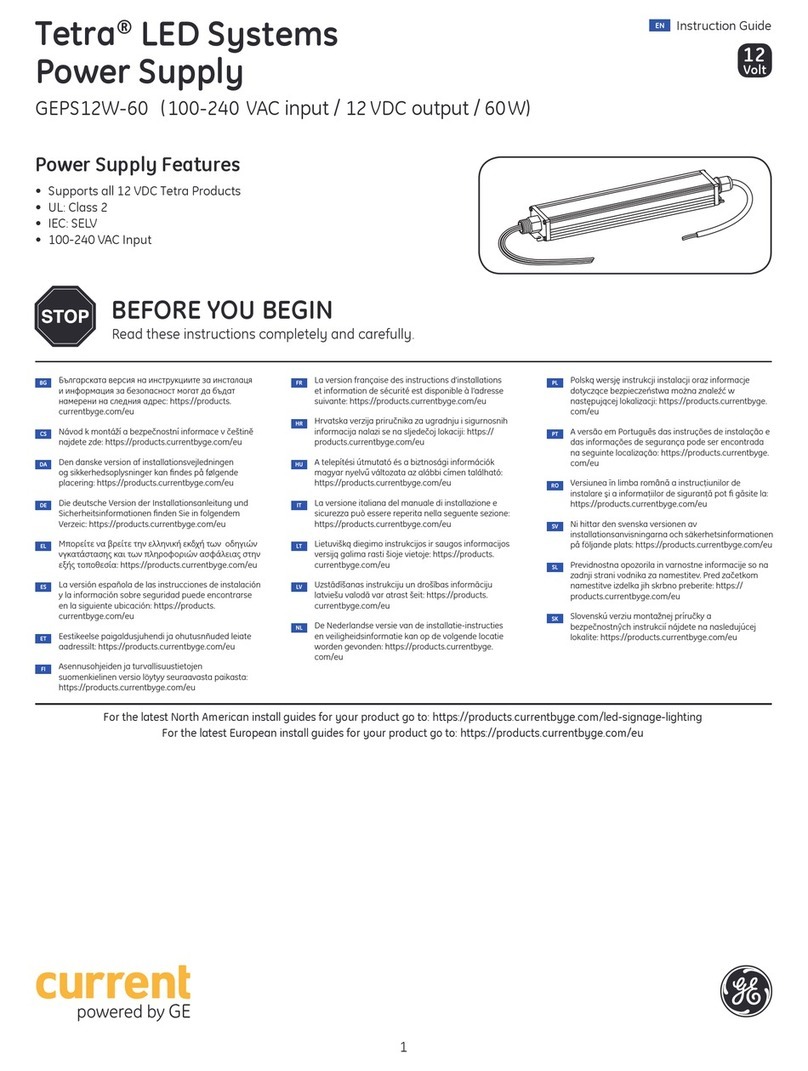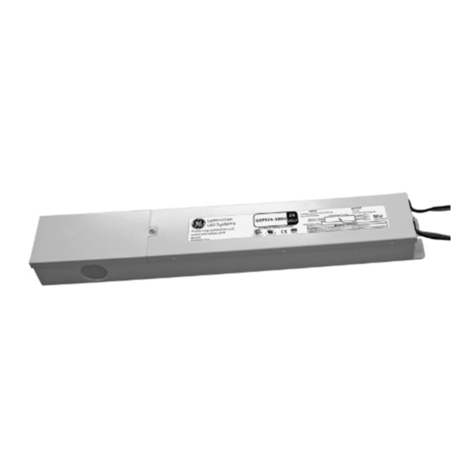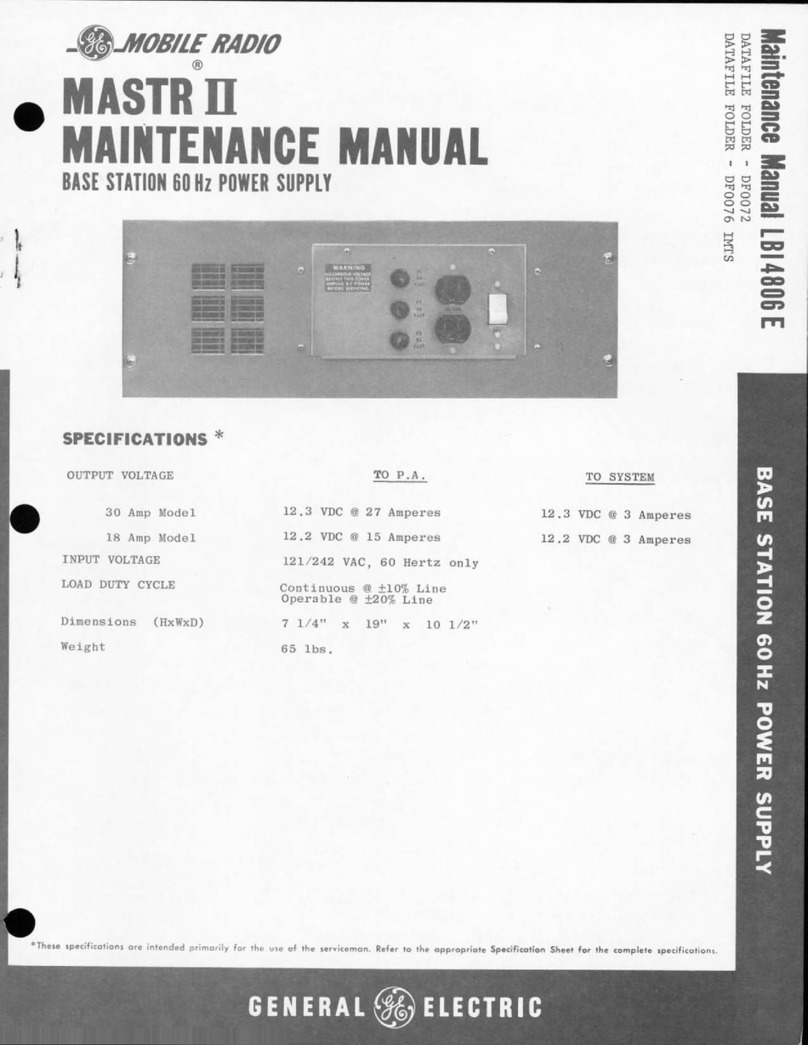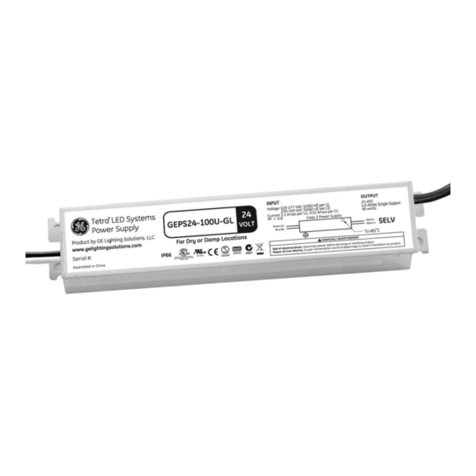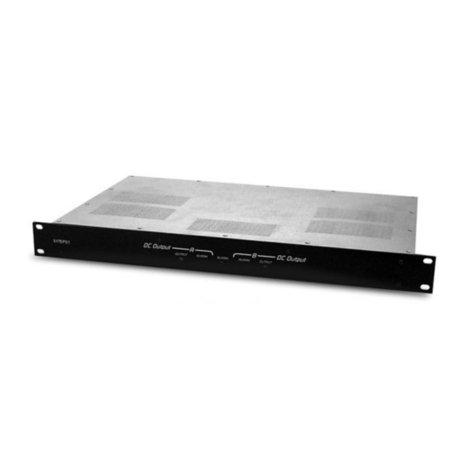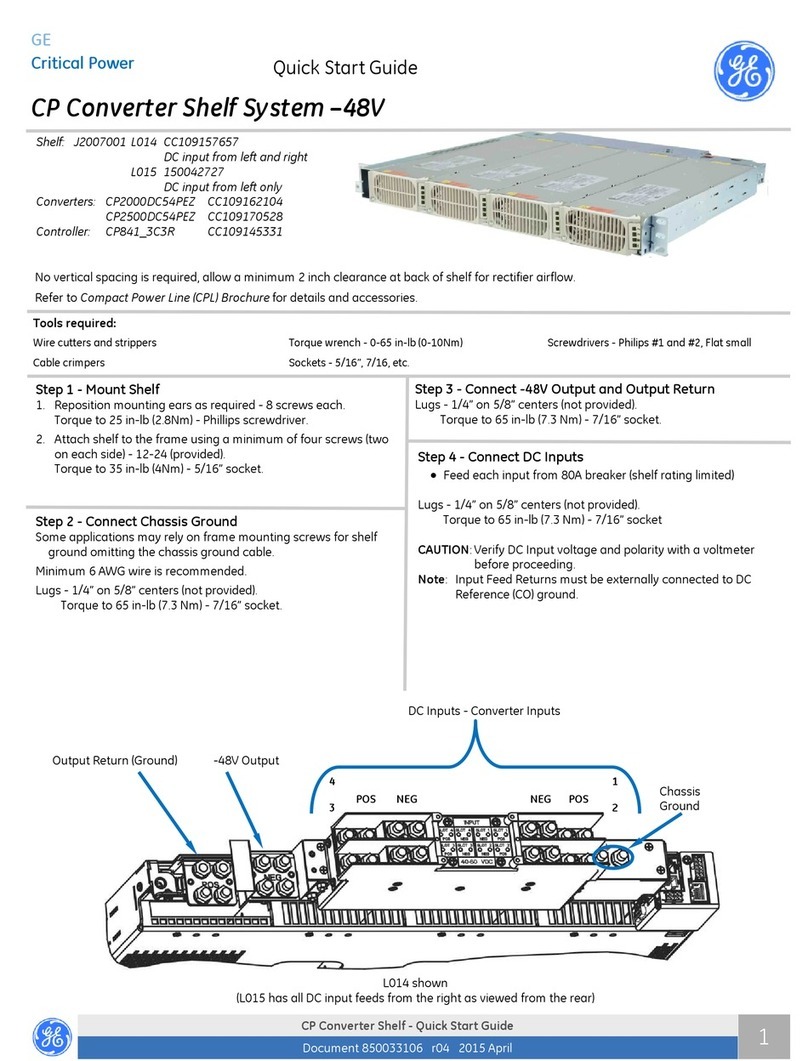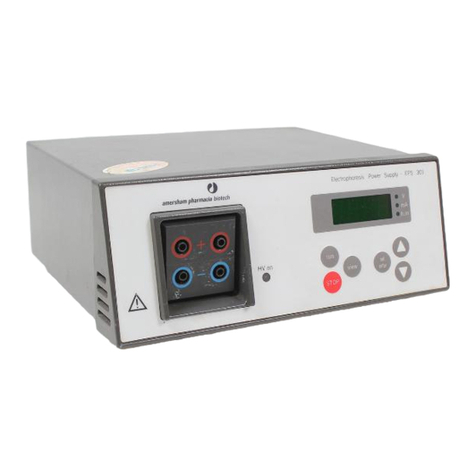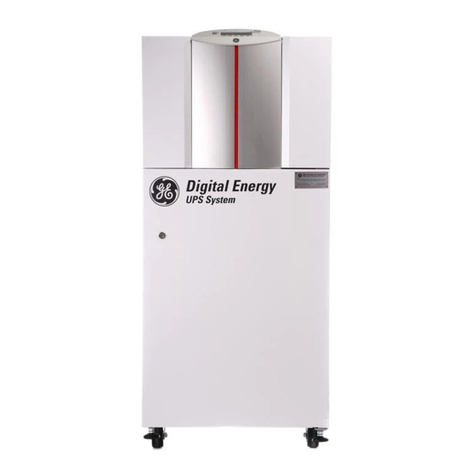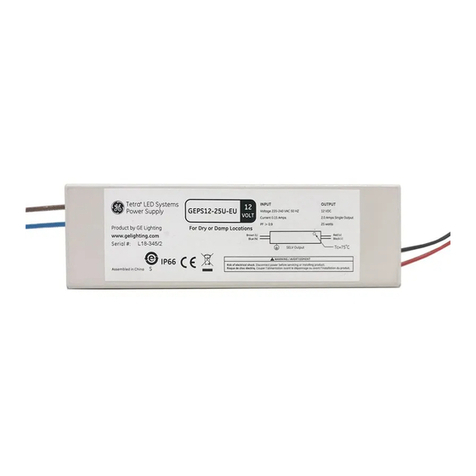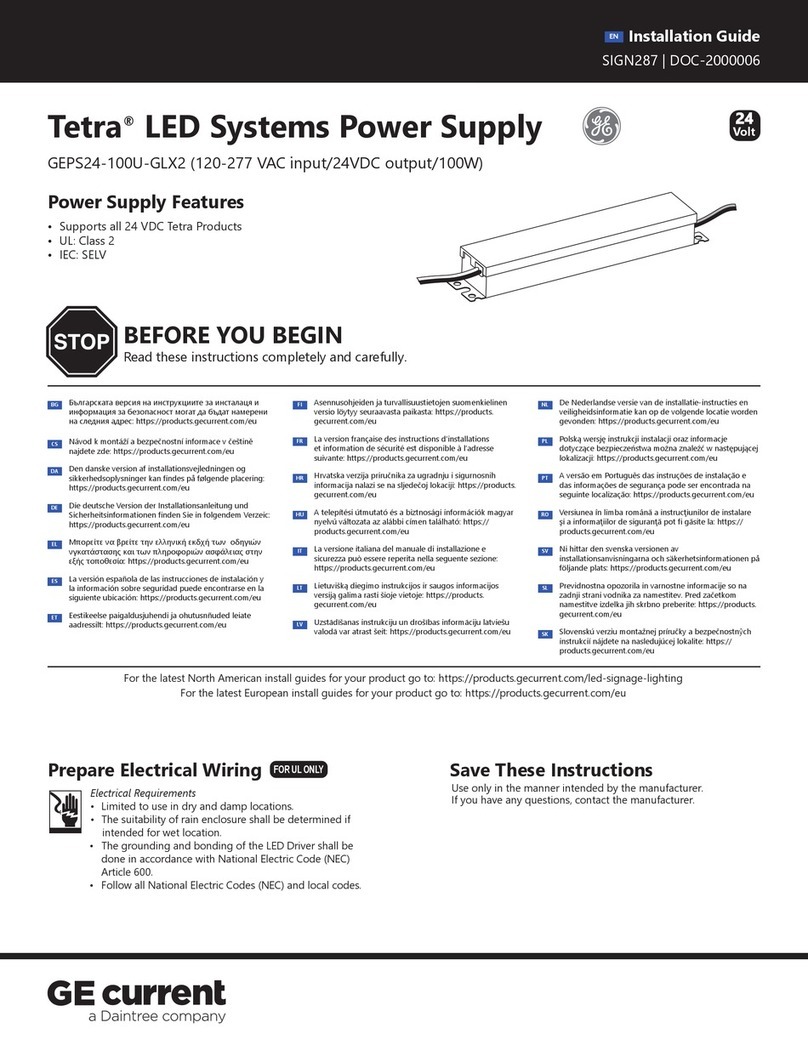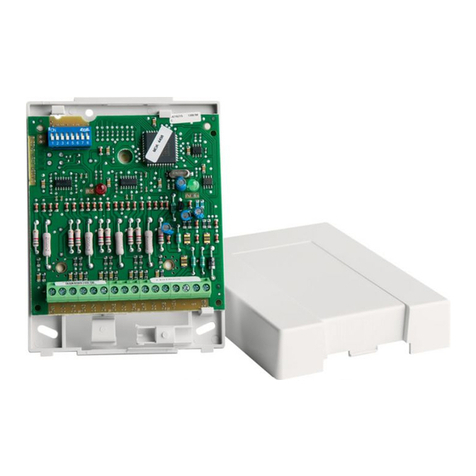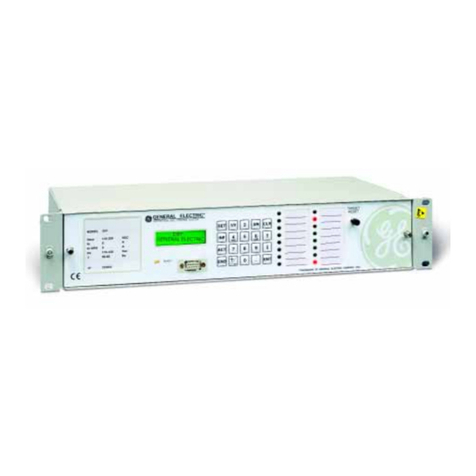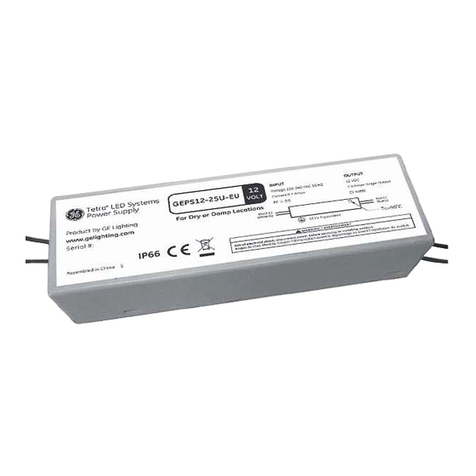
GE Power Management
SMOR_B 1000/7000 QUICK REFERENCE GUIDE
* MODEL LIST
SMOR ___1_2 1 _ _ 00B DESCRIPTION
FAMILY
03xIph + Ig (without voltage functions)
13xIph + Ig + 3xV
43xIph + Ig + 3xV (ungrounded system)
63xIph + Ig + Ig2 + 3xV
73xIph + Ig + 3xV + Vo (dedicated)
COMMUNICATIONS INTERFACE
0RS232
1Plastic F.O. + RS232
2Glass F.O. + RS232
3RS232+RS485
RANGES
** Ranges (see table)
MMI LAGUAGE
MSpanish
DEnglish
EXPANSION
0Without expansion board
1With expansion board
AUXILIARY VOLTAGE
A48Vdc
H110 / 250 Vdc
* RANGES
MODELS A B CDEFG H
1/7 Phase 1-12 0.2-2.4 1-12 1-12 1-12 0.5-6 0.5-6 2-16
Ground 1-12 0.2-2.4 0.2-2.4 0.5-6 0.1-1.2 0.2-2.4 0.1-1.2 0.2-2.4
4 Phase 0.2-2.4 1-12
Ground 0.005-0.1 0.005-0.1
6 Phase 1-12 1-12
Ground 0.2-2.4 0.2-2.4
Ground 2 0.025-0.3 0.5-6
* INPUTS / OUTPUTS
- Without expansion board:
•6 digital inputs (two groups of 3 inputs with one common in each group).
•2 groups of 4 configurable outputs with one common in each group.
•2 trip contacts.
•2 close contacts.
•1 alarm contact
- With expansion board:
•12 digital inputs (4 groups of 3 inputs with one common in each group).
•2 groups of 4 configurable outputs with one common in each group.
•4 configurable outputs electrically isolated.
•2 trip contacts.
•2 close contacts.
•1 alarm contact.
•2 coil supervision circuits.
* COEFFICIENTS FOR INVERSE CURVES
−
=1
α
MK
TDtime
CURVE Kα
Inverse 0.13 0.02
Very Inverse 16 1
Extremely Inverse 96 2
* DEFAULT LEDSCONFIGURATION (STANDARD MODEL)
LED CONFIGURATION NMEMONIC MEMORY MODE
1Phase A Trip φΑ TRIP YES FIXED
2Phase B Trip φB TRIP YES FIXED
3Phase C Trip φC TRIP YES FIXED
4Ground Trip GRN TRIP YES FIXED
5Function 51/67 Trip 51/67 TRIP YES FIXED
6Function 50/67 Trip 50/67 TRIP YES FIXED
7Function 46 PT Trip 46 TRIP YES FIXED
8Voltage Functions Trip 27/59/59N TRIP YES FIXED
9Frequency Functions Trip 81 TRIP YES FIXED
10 Recloser Out of Service 79 OUT OF SERVICE NO FIXED
11 Reclose in progress 79 IN PROGRESS NO FIXED
12 Recloser LockOut 79 LOCKOUT NO FIXED
13 52 Open 52 OPEN NO FIXED
14 Coil Supervision Alarm COIL SUPERV. NO FIXED
15 Critical Alarm CRITICAL ALARM NO FIXED
16 Remote Mode REMOTE MODE NO BLINK.
* DEFAULT INPUTSCONFIGURATION (STANDARDMODEL)
INPUT CONFIGURATION CONTACT COMMON
CC1 Breaker input 52/b C9 D10
CC2 Recloser Block D9 D10
CC3 Recloser UnBlock C10 D10
CC4 50 P Block C11 D12
CC5 50 N Block D11 D12
CC6 Recloser Inhibit C12 D12
CC7 Reclose Initiate E9 F10
CC8 Phase Directional Blocking F9 F10
CC9 Ground Directional Blocking E10 F10
CC10 Oscillography Trigger E11 F12
CC11 Active Table Select 0 F11 F12
CC12 Active Table Select 1 E12 F12
* CONFIGURABLEINPUTSOPTIONS:
• Recloser Block (L) • Recloser Block (P)
• Recloser Unblock (P) •Reclose Initiate (P)
•Reclose Inhibition (L) • Oscillography External Trigger (P)
• PT Secondary MCB Tripping (L) • Fail To Open Pickup (P)
• Active Table Select 0 (L) • Active Table Select 1 (L)
• Open Command (P) • Close Command (P)
• Phase Directional Blocking (L) • Ground Directional Blocking (L)
• Phase Instantaneous Blocking (L) • Ground Instantaneous Blocking (L)
• Phase Units Blocking (L) • Ground Units Blocking (L)
• Voltage Uniis Blocking (L) • 81U/81O Units Blocking (L)
• 46 PT Unit Blocking (L) • General Blocking (L)
NOTE: (L) indicates Level input.
(P)indicates Pulse input.
* DEFAULT OUTPUTSCONFIGURATION(STANDARD MODEL)
OUTPUT CONFIGURATION CONTACT COMMON
S1 51/67 P Pick-Up C4 C6
S2 51/67 N Pick-Up D4 C6
S3 46 PT Trip C5 C6
S4 81 Trip D5 C6
S5 27 / 59 Trip C7 D6
S6 Last Trip D7 D6
S7 Reclose In Progress C8 D6
S8 Recloser Out of Service D8 D6
S9 51/67 P Trip E1 F1
S10 50/67 P Trip E2 F2
S11 51/67 N Trip E3 F3
S12 50/67 N Trip E4 F4
* CONFIGURABLEOUTPUTSOPTIONS:
Program Initiates 81O Pickup 51 Phase A Trip Trips not allowed
Settings Change 27P Pickup 51 Phase B Trip I with 52 open
Write Counters 59P Pickup 51 Phase C Trip 52 maintenance Al.
Cnfg. Change 59NH Pickup 50H Phase A Trip Coil 1 Cont. Failure
External Trigger 59NL Pickup 50H Phase B Trip Coil 1 DCsupply Fail.
Communic. Trigger 50H Phase C Trip Coil 2 Cont. Failure
50L Phase A Trip Coil 2 DC supply Fail.
50L Phase B Trip Closed Trip
Contacts
Reclose Command 51 Phase A Pickup 50L Phase C Trip Active Table 1
79 Block Command. 51 Phase B Pickup 27P AB Trip Active Table 2
79 Unblock Comma. 51 Phase C Pickup 27P BC Trip Active Table 3
Open Command 50H Phase A Pickup 27P CA Trip
Close Command 50H Phase B Pickup 59P AB Trip
50H Phase C Pickup 59P BC Trip New Events
50L Phase A Pickup 59P CA Trip
50L Phase B Pickup 52 Status
Activation Input 1 50L Phase C Pickup 79 Out of Service
Activation Input 2 27P AB Pickup Reclose in progress 52 Failed to Open
Activation Input 3 27P BC Pickup Reclose initiate 52 Failed to Close
Activation Input 4 27P CA Pickup Ext. Reclose Initiate. Directional A
Activation Input 5 59P AB Pickup Reclose Inhibit. Directional B
Activation Input 6 59P BC Pickup Directional C
59P CA Pickup Last Trip Directional N
79 Ready
Activation Input 7 51 PT Trip Lockout: Fail to open AND 1
Activation Input 8 51 NT Trip Lockout: Repet. Trip AND 2
Activation Input 9 50 PH Trip Lockout: No cond. AND 3
Activation Input 10 50 PL Trip Lockout: Faulty 79 AND 4
Activation Input 11 50 NH Trip Global Lockout AND 5
Activation Input 12 50 NL Trip AND 6
46 PT Trip AND 7
81 U Trip Recloser Block AND 8
51PT Pickup 81 O Trip AND 9
51NT Pickup 27 P Trip Parallel E2PROM Al. AND 10
50PH Pickup 59 P Trip Serial E2PROM Al. AND 11
50PL Pickup 59 NH Trip In/Out of Service AND 12
50NH Pickup 59 NL Trip Default general
Sett. AND 13
50NL Pickup Default Table 1 Sett. AND 14
46PT Pickup Default Table 2 Sett. AND 15
81U Pickup Default Table 3 Sett. AND 16
NOTE: By using the INF key on the MMI you can see the status of the shadowed signals.
Measurements and communication estates are also available.
* CONFIGURATION SETTINGS (7169)
SETTING RANGE DEFAULT
REMOTE PORT BAUD RATE 1200-115200 bauds 19200 bauds
REMOTE – STOP BITS 1-2 1
LOCAL PORT BAUD RATE 1200-19200 bauds 19200 bauds
LOCAL – STOP BITS 1-2 1
LOCAL SETTINGS No Per/Per Per
REMOTE SETTINGS No Per/Per Per
LOCAL OPERATIONS No Per/Per Per
REMOTE OPERATIONS No Per/Per Per
UNIT NUMBER 1 – 255 1
PASSWORD 0-99999 1
t TIMEOUT 0-86400 0
* SMOR_B SOFTWARE
GE_INTRO: RelayConfiguration .
GE_LOCAL: Settings, Events, Status.
GE_OSC: Oscillography analysis.
* COMMUNICATIONS
SMOR_B PC DB 9 MODEM
3 2 3
2 3 2
1 4 4*
5 5 5
* Join 6 and 7 points too.
